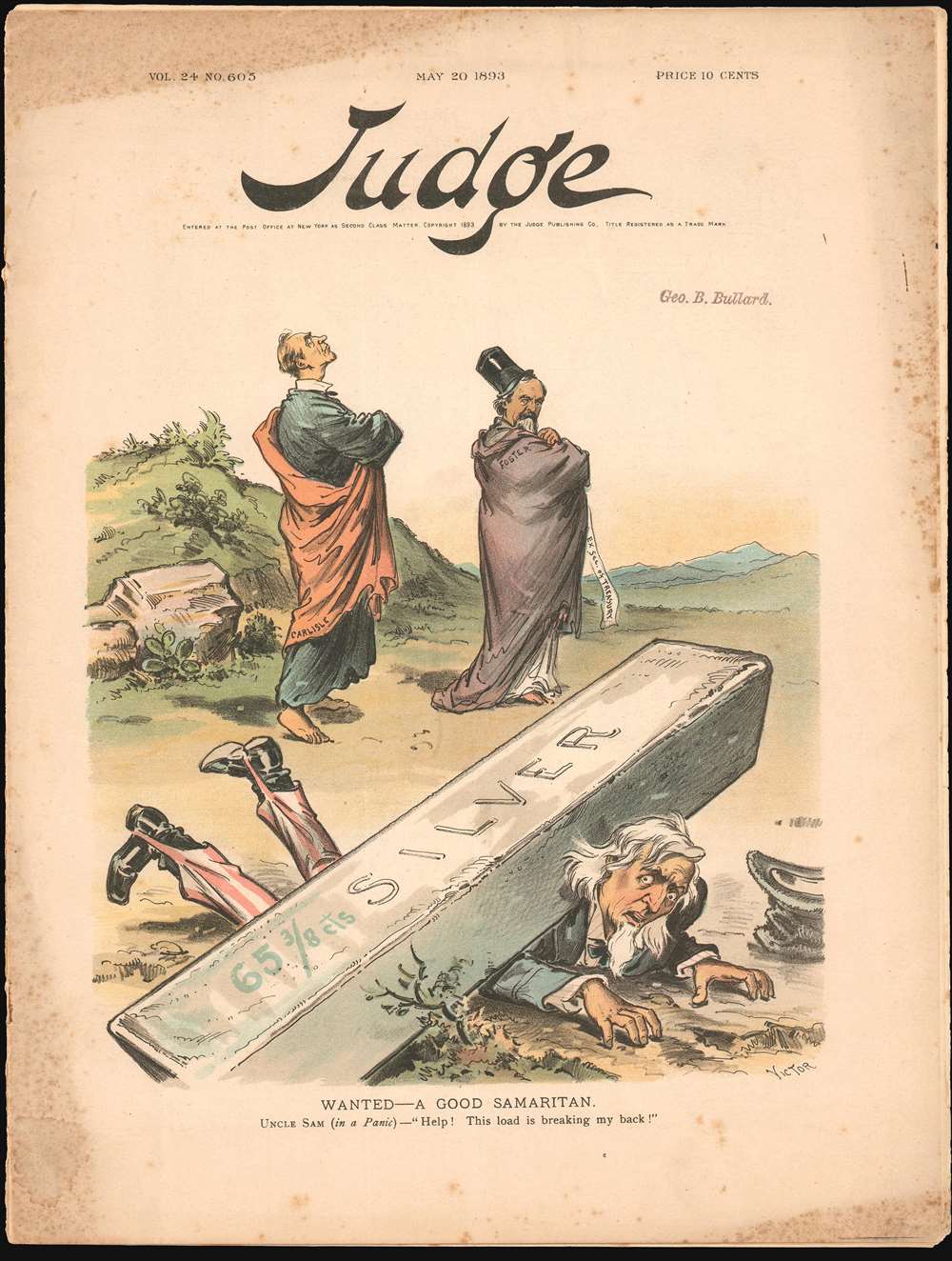1893 Gillam Political Cartoon of Uncle Sam Crushed by Silver
WantedGoodSamaritan-judge-1893
Title
1893 (dated) 14 x 10.5 in (35.56 x 26.67 cm)
Description
Interpreting the Cartoon
Two Secretaries of the Treasury, Charles Foster and John G. Carlisle, appear in the roles of the priest and the Levite who, in the parable, ignore a beaten man. Here, Foster and Carlisle ignore Uncle Sam, the personification of the United States, as an enormous silver bar 'breaks his back.' Many, including Carlisle and President Grover Cleveland, reviled the Sherman Silver Purchase Act, which forced the U.S. Treasury to buy excess silver, thus artificially deflating the values of both silver and gold. It also allowed for the exchange silver certificates for gold, leading to a depletion of America's gold reserve. The Cleveland Administration's response was to lobby Congress to repeal, but this took months. Meanwhile, unemployment skyrocketed, hitting twenty-five percent in Pennsylvania, thirty-five percent in New York, and forty-three percent in Michigan, with national unemployment estimated at somewhere between seventeen and nineteen percent. Fifteen thousand businesses closed, five hundred banks failed, and an unknown number of farms ceased to exist. Thousands of people became homeless when they were unable to pay their mortgages and communities organized soup kitchens to feed the hungry.The Origins of the Panic of 1893
One of the causes of the Panic can be traced to foreign entities investing in Argentina, which had been encouraged by Baring Brothers, an Argentine bank. This era of plenty came to an end after the wheat crop failure in 1890 and a coup in Buenos Aires. Cautious investors moved to hoarding gold instead of paper money. The drive to exchange paper money for gold, in turn, led to bank runs, further deepening the financial panic.Publication History
This cartoon was drawn by Victor Gillam and was published on the cover of the May 20, 1893 edition of Judge.Cartographer
Frederick Victor Gillam (c. 1858 - January 29, 1920) was an American political cartoonist, best known for his work in Judge magazine. His work was also published in The St. Louis Dispatch, Denver Times, New York World and New York Globe. He was born in Yorkshire, England and his family immigrated to the United States when Gillam was six year old. His older brother Bernhard Gillam (1856 - 1896) was a famous cartoonist as well, leading Gillam to sign his work 'Victor' or F. Victor' until his brother's death. He was also a member of the New York Press Club and New York Lotos Club. Gillam died in Brooklyn, New York on January 29, 1920. More by this mapmaker...

